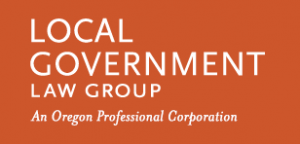Down in the Weed(s): Regulation of Hemp and Marijuana
Dan Lawler
From our Spring 2020 e-newsletter
The most recent United States Farm Bill, which Congress passed in 2018, reopened American farming and industry to hemp, a long-banned commodity currently experiencing a global surge in production. Oregon’s climate and soils are well-suited for hemp production and local governments throughout the state have received inquiries from private companies wishing to grow, process, and sell hemp or hemp products within their jurisdictions. However, the similarities and differences between hemp and marijuana can create confusion for local governments interested in regulating one or both products. This article details: 1) the differences between hemp and marijuana; 2) state and local regulation of hemp and marijuana; and 3) how local governments can regulate the location, uses, and effects of hemp and marijuana businesses.
How Are Hemp and Marijuana Different?
Hemp and marijuana are both varieties of the cannabis plant, Cannabis sativa. However, hemp and products derived from hemp contain no more than 0.3% THC (the psychoactive compound in cannabis plants). Any cannabis product or part of the cannabis plant that contains more than 0.3% THC is considered “marijuana” under Oregon law. Although the plants can look similar, they have different physical attributes and uses. Marijuana is grown primarily for recreational and medical use, but hemp is incapable of producing the “high” that marijuana users seek and has a much wider variety of uses.
The following is a non-exhaustive list of products derived from hemp that local governments could receive inquiries about:
-
- Cannabidiol (CBD), or concentrated hemp oil
- Clothing and fabrics
- Food (hemp seeds, hearts, oils, and milks)
- Paper
- Skincare and soaps (using hemp oil)
- Animal bedding
Regulation of Hemp and Marijuana
The Oregon Liquor Control Commission (OLCC) and Oregon Health Authority (OHA) regulate recreational and medical marijuana, respectively, while the Oregon Department of Agriculture (ODA) regulates hemp. ODA places only a few restrictions on the retail sale of hemp products like CBD. First, under OAR 603-048-1500(3), a person may not sell a hemp product to a customer unless the hemp item is tested in accordance with ODA requirements. Testing will reveal the THC concentration of the hemp product and OAR 603-048-1500(5) prohibits retailers from selling hemp products to consumers that contain more than 0.3% THC. To sell hemp or CBD products containing more than 0.3% THC would require the seller to obtain a retailer license from the OLCC or to register with the OHA. However, OLCC, OHA, and ODA perform all required testing on hemp and marijuana products, as cities and counties lack the regulatory authority to do so.
Because the State regulates and allows hemp production, local governments in Oregon are unable to place outright prohibitions on growing, processing, or selling hemp and hemp products. In contrast, ORS 475B.968(1) provides cities and counties with the opportunity to allow their electors to vote on whether to allow or prohibit the establishment of the following marijuana operations within their jurisdictions:
-
- Marijuana processing sites and dispensaries registered with OHA
- Marijuana producers, processors, wholesalers, and retailers licensed by OLCC
After submitting the question to its voters, a city or county can adopt an ordinance to reflect the results of the election and to either allow or prohibit marijuana facilities. Please let us know if your county or city has questions about the election or ordinance described above.
Other Ways to Regulate Hemp and Marijuana
Although cities and counties generally have broad authority to regulate for the public welfare, any local ban on hemp or hemp businesses may run afoul of the Interstate Commerce Clause of the U.S. Constitution. Similarly, any ban on marijuana or marijuana businesses that does not comply with ORS 475B.968(1) and follow the statute’s procedures may run afoul of state law. However, cities and counties can regulate some aspects of the hemp and marijuana industries within their jurisdictions through land use and nuisance codes.
Land use codes can help local governments regulate the locations of hemp and marijuana businesses, as well as the uses allowed at each location. Generally, hemp and marijuana grow operations are subject to agricultural zones and uses, while the processing of hemp and marijuana plants into other products can constitute a light, medium, or heavy industrial use. Predictably, the retail of hemp and marijuana products is generally limited to commercial zones. However, the specific language of your city or county’s land use code could change the analysis above. Please let us know if your city or county has questions about regulation of hemp or marijuana businesses under its zoning and land use code.
Cities and counties can also use nuisance codes to address some of the potential effects of hemp and marijuana business within their jurisdictions. For example, many nuisance codes prohibit the accumulation of plant wastes and rubbish without proper screening or storage measures. In addition, nuisance codes typically include provisions that allow cities and counties to address offensive odors generated within their boundaries. If a hemp or marijuana business causes any of the conditions detailed above, a city or county may be able to declare these conditions public nuisances and initiate proceedings to abate the nuisances. However, the specific language of each nuisance code and the specific facts of each situation will determine whether nuisance abatement is a viable option. Please let us know if your city or county has questions about regulating the effects of hemp and marijuana businesses through its nuisance code.
